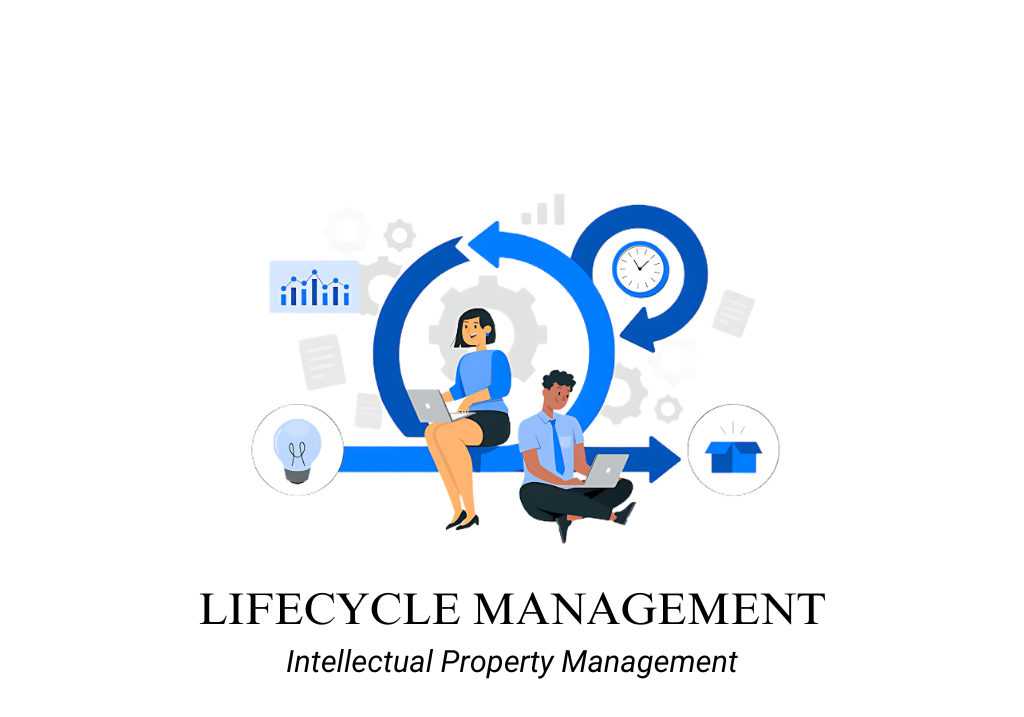Introduction
Meaning
Lifecycle management in intellectual property (IP) management involves overseeing the entire lifespan of an IP asset, from its inception and registration through to its maintenance, renewal, and potential monetization or disposal. This functionality ensures that every stage of an IP asset’s life is managed effectively to maximize its value and ensure compliance with legal and regulatory requirements.
Purpose
The purpose of lifecycle management is to provide a structured approach to managing IP assets, ensuring that they are effectively monitored, maintained, and utilized throughout their lifecycle. This functionality helps organizations protect their intellectual property, avoid missed deadlines for renewals, and manage licensing agreements and contracts efficiently.
Benefits
- Comprehensive Asset Management: Ensures that all IP assets are tracked and managed throughout their entire lifecycle, preventing lapses in protection.
- Proactive Renewal Management: Minimizes the risk of losing valuable IP rights by automating and managing renewal processes.
- Streamlined Licensing: Enhances the management of licensing agreements and contracts, ensuring compliance and optimizing revenue from IP assets.
- Improved Compliance: Helps organizations maintain compliance with legal and regulatory requirements throughout the IP lifecycle.
- Maximized IP Value: Ensures that IP assets are fully leveraged, protected, and monetized, maximizing their value to the organization.
CHECK MORE: Guide to find best Intellectual Property Management Tools for Lawyers
Features
Workflow Management System (IP Lifecycle)
Meaning:
A workflow management system for IP lifecycle is a feature that organizes and automates the processes involved in managing an IP asset from creation through to its expiration or renewal. This system includes tools for tracking key milestones, managing deadlines, and ensuring that all necessary actions are taken at each stage of the IP lifecycle.
Purpose:
The purpose of a workflow management system is to ensure that the management of IP assets is systematic, organized, and efficient. By automating and tracking each step of the IP lifecycle, this feature helps organizations avoid errors, missed deadlines, and other issues that could jeopardize the protection or value of their IP assets.
Use Cases:
- Patent Lifecycle Management: An organization uses a workflow management system to track the stages of a patent from filing to grant, and through to its eventual renewal or expiration, ensuring all critical actions are taken in a timely manner.
- Trademark Monitoring: A company uses this system to manage its trademarks, tracking renewal dates, monitoring for potential infringements, and managing the entire lifecycle of each mark.
Renewal Management
Meaning:
Renewal management is a feature that helps organizations monitor and manage the renewal deadlines for their IP assets, such as patents, trademarks, and copyrights. This feature often includes automated reminders, renewal fee tracking, and integration with relevant IP offices to streamline the renewal process.
Purpose:
The purpose of renewal management is to prevent the inadvertent expiration of valuable IP rights by ensuring that all renewal deadlines are met. This feature is essential for maintaining the legal protection of IP assets and avoiding the costly consequences of missed renewals.
Use Cases:
- Patent Renewal: A company uses renewal management to track and manage the renewal dates for its global patent portfolio, ensuring that all patents are renewed on time.
- Trademark Portfolio Management: An organization employs renewal management to handle the renewals of its trademarks across multiple jurisdictions, avoiding the risk of losing trademark protection.
Management of Licensing Agreements and Contracts
Meaning:
The management of licensing agreements and contracts is a feature that facilitates the organization, tracking, and administration of agreements related to the licensing and commercialization of IP assets. This includes tracking contract terms, managing royalty payments, and ensuring compliance with the terms of each agreement.
Purpose:
The purpose of this feature is to ensure that all licensing agreements and contracts related to IP assets are effectively managed to maximize revenue and ensure compliance. By providing a structured approach to managing these agreements, organizations can optimize their IP monetization strategies and reduce the risk of legal disputes.
Use Cases:
- Royalty Management: A company uses this feature to track royalties from licensed patents, ensuring that payments are made on time and in accordance with the terms of the agreement.
- Contract Compliance: An organization manages its IP licensing contracts through this system, ensuring that all parties comply with the terms and that any necessary actions, such as contract renewals or amendments, are carried out efficiently.
Conclusion
This functionality and its features are essential for ensuring that IP assets are effectively managed throughout their entire lifecycle, from creation to renewal, and that all associated agreements and contracts are handled efficiently and in compliance with legal requirements.
CHECK OUT IP MANAGEMENT TOOLS ON DIRECTORY OR CLICK HERE


